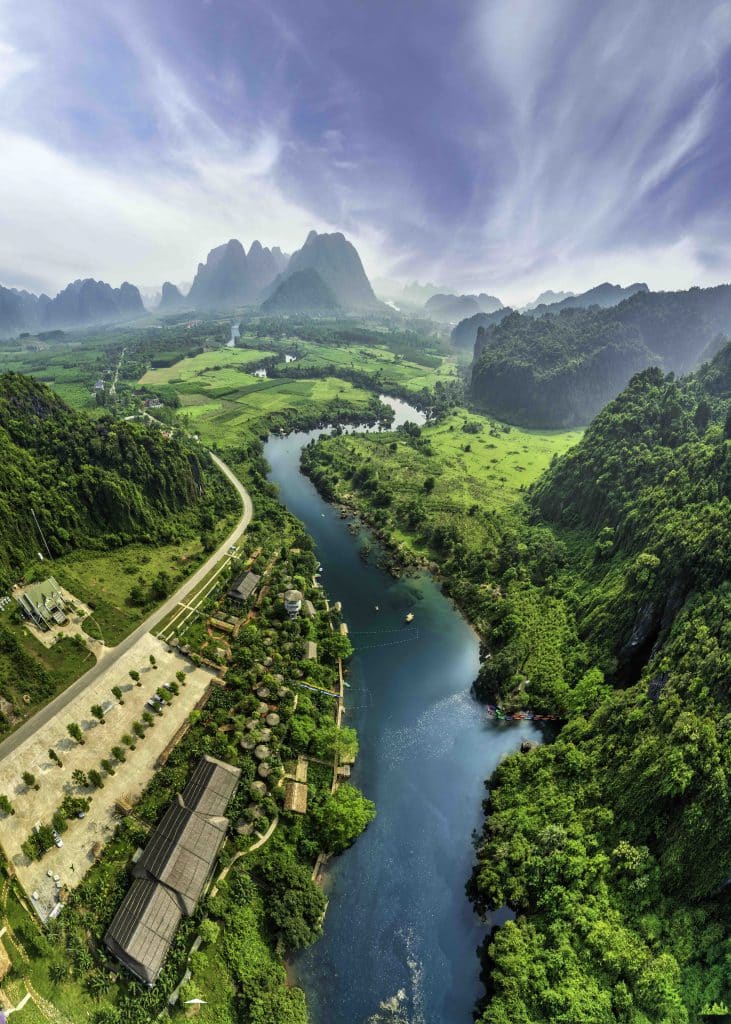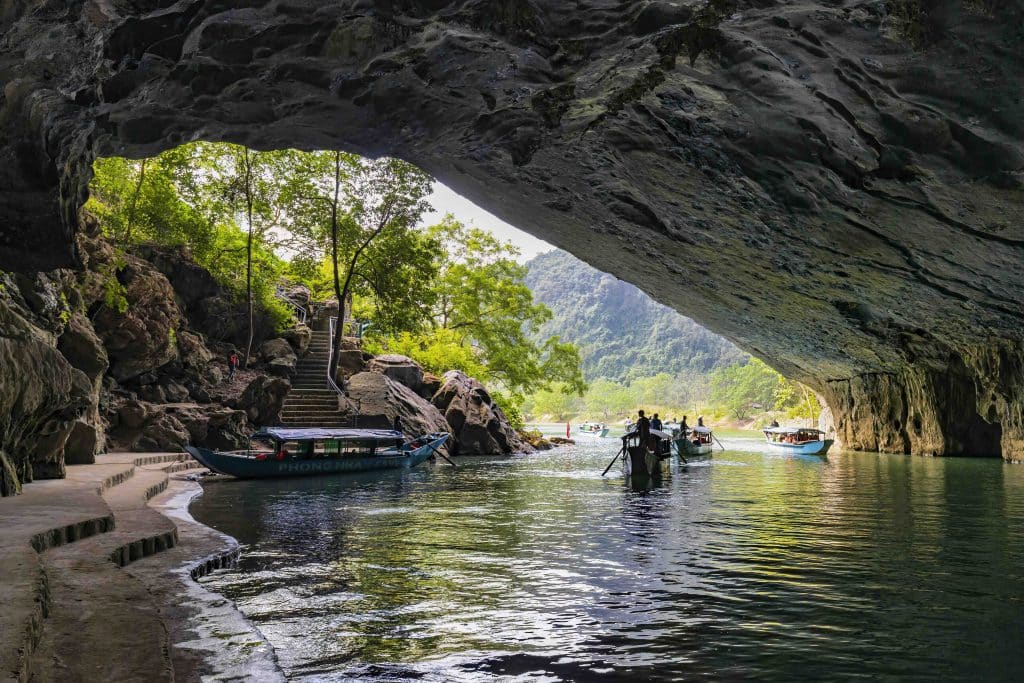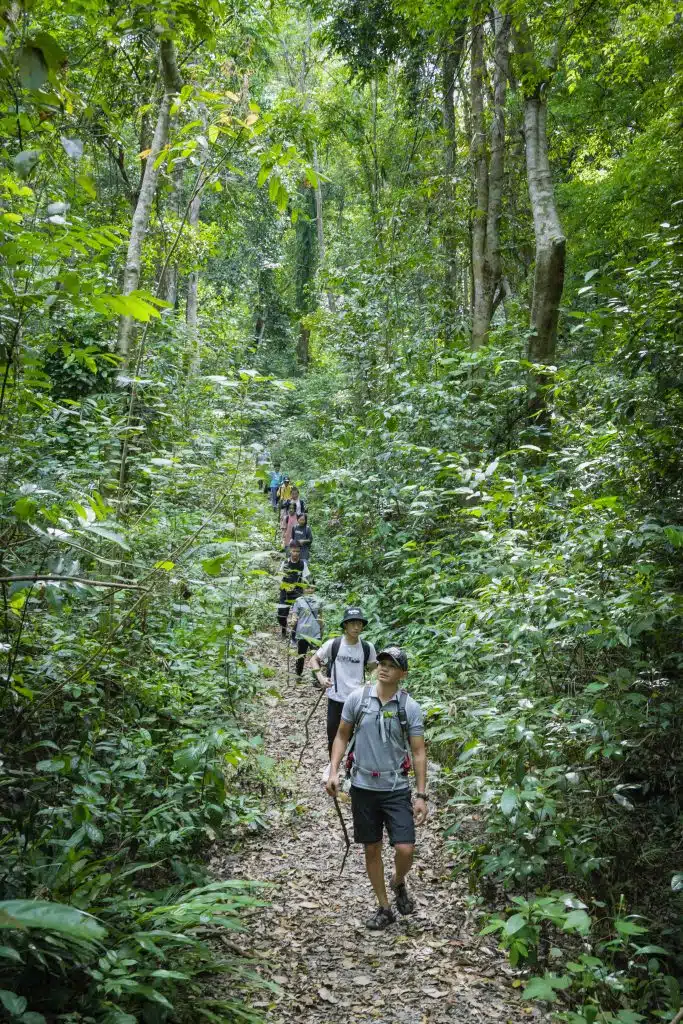Story: Hoang Bui
Photos: Nguyen Hai
When people hear “Truong Son,” they immediately think of the legendary trail named after President Ho Chi Minh. This trail is a symbol of the indomitable will, silent sacrifices, and heroic victories of the Vietnamese nation. This vital artery played a crucial role in the April 30th victory, liberating the South and unifying the country.

Amid Truong Son’s complex network of transportation routes and vast ancient forests, Route 20 Quyet Thang in Bo Trach District, Quang Binh Province, served as the main artery, linking the eastern and western regions of Truong Son and opening a crucial path to the frontlines. To keep this road open, tens of thousands of soldiers, volunteer youth, transportation workers, and civilian laborers bravely held their ground, despite the relentless bombing. They fell at fierce battlegrounds like Tram Ang, Ba Thang Slope, A-ki, Ca Roong, and ATP (the A-shaped curve, Ta Le Tunnel, and Phu La Nhich Pass) to keep the road open. In March 1973, while visiting the Truong Son soldiers, General Vo Nguyen Giap stood at the ATP hotspot and declared, “Route 20 deserves to be called a ‘miracle, feat, and wonder.’”
Among the five vertical and 21 horizontal axes of the legendary Truong Son trail system, Route 20 Quyet Thang was the most fiercely contested, with the highest density of bombs dropped per kilometer along the entire route. While the Truong Son – Ho Chi Minh Trail National Special Relic Site comprises 46 historical sites, Route 20 Quyet Thang alone is home to six. It is regarded as the most sacred horizontal route in the Truong Son trail system.
Today, the road endures, preserving both history’s echoes and the majestic beauty of nature, serving as a poignant destination for future generations to honor the past and explore.

Following in historic footsteps
On a late spring day, we ventured into the Truong Son mountains along Route 20 Quyet Thang. At the road’s starting point in Phong Nha town, where Km 0 is marked in Xuan Son Village, Bo Trach District, Quang Binh, our group paused to offer incense at the volunteer youth monument before continuing to Xuan Son Ferry, a site once heavily bombed. In late 1966, to “share the fire” and support the transport of troops and supplies to the southern battlefield, the Nguyen Van Troi Ferry was established about four kilometers from Xuan Son Ferry.
From Xuan Son Ferry to Phong Nha Cave, various caves and cliffs were transformed into safe shelters for storing weapons and supplies, including sites in Ruc Cave, Eo Cave, Diem Cave, Ha Loi Cave, and especially Phong Nha Cave itself. Many of these caves have now become famous tourist destinations.
Leaving Phong Nha town, we continued westward along Route 20 Quyet Thang to visit sites like Tram Ang Tunnel, once the base of Military Station 14, and the historical site of Tam Co Cave, where eight young female volunteers in their twenties sacrificed their lives. Nearby, a sacred memorial in Co Y Ta Cave stands as a reminder of courage and dedication for future generations. Not far away are hotspots like Ca Roong – ATP, where thousands of soldiers, volunteer youth, and civilian laborers fell to protect this vital route. Here, a temple has been built to commemorate the heroic martyrs. The final stop of our journey was Vietnam-Laos Border Marker 543, honoring the sacrifices of border guards in safeguarding the sacred border of the homeland.

Over the past 50 years, many of the veterans who once faced life or death here have returned to Truong Son. They come back to relive memories and light incense to remember their comrades who remain in the vast wilderness. However, most of these journeys have been solitary or in quiet groups, lacking a well-designed tourist route to explore Truong Son more deeply.
Now, with the “Rediscovering the Legendary Truong Son” tour, visitors can journey back in time, immersing themselves in the sacred space of historic relics along Route 20 Quyet Thang. This route runs through the heart of Phong Nha – Ke Bang National Park, a UNESCO World Heritage Site. Every step on this road allows tourists to touch the glorious past and fully appreciate the beauty of the Truong Son wilderness.
Pristine nature and local cultures
Today, Truong Son is not only a place of heroic historical significance but also a natural destination, with vast primeval forests, crystal-clear streams winding through mountain ranges, and a hidden system of magnificent caves.
A highlight of this journey is Thac But, or Buddha Waterfall, one of the most beautiful waterfalls in Thuong Trach Commune. According to legend, Ma Coong girls used to bathe here before participating in the Drum Beating Festival, the largest festival of this ethnic group, held on the 15th day of the first lunar month to pray for a bountiful harvest. Here, visitors can admire the soft waterfall cascading down moss-covered rocks and learn about the cultural life of the local people. Small villages nestled in misty valleys and streams shimmering in the sunlight evoke feelings of peace and relaxation.
The journey to explore the Truong Son Trail is not just a trip back through history but an opportunity to better understand the silent sacrifices and great losses of the older generations. Beyond that, we can admire what nature has given this land, deepening our love for our homeland and country.










